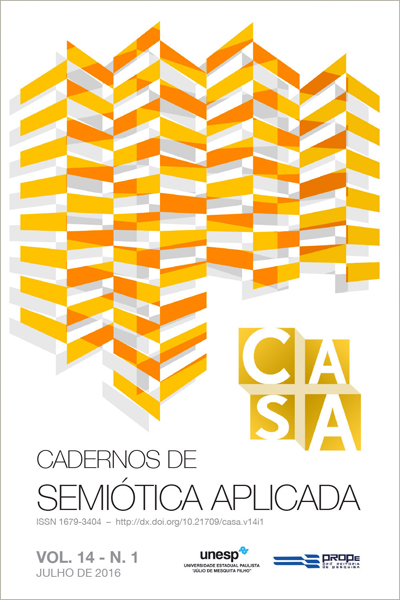BODY TRACES IN A SCIENCE FICTION NOVEL
DOI:
https://doi.org/10.21709/casa.v14i1.8253Keywords:
Semiotics of trace, Body, Philip K. Dick, Science fiction.Abstract
Reviewing the relationship among body, culture and language (started in The Semiotics of Passions, 1991), Jacques Fontanille seeks to establish a dialogue between the sensible and the intelligible from a new angle in the French semiotic theory: accepting a biopsychic body as an important entity in the construction of meaning, responsible for uniting expression and meaning, and present in the text as trace of experience, and turned into semiotic object, plane of immanence and content. In the book Corps et Sens (2011), the semiotician interweaves theoretical frameworks built in the human and natural sciences, with semiolinguistic concepts, proposing an approach which relates proprioception, enunciation, figures, sensory fields, body traces and the perception of phenomena, searching for a relationship among body, discourse and semiotic practices. In this article, we intend to demonstrate what this kind of approach can reveal about the literary text. The novel chosen, Do androids dream of electric sheep? (1968), is a famous text by Philip K. Dick, science fiction American author, known mainly for producing dystopic worlds and characters who must always deal with identity issues and their bodies.
Downloads
Published
Issue
Section
License
The authors of the approved papers agree to grant non-exclusive publication rights to CASA. Thus, authors are free to make their texts available in other media, provided that they mention that the texts were first published in CASA: Cadernos de Semiótica Aplicada. Besides, they authorize the Journal to reproduce their submission in indexers, repositories, and such. Authors are not allowed to publish the translation of the published paper to another language without the written approval of the Executive Editors. The authors are totally responsible for the content of the published work.

